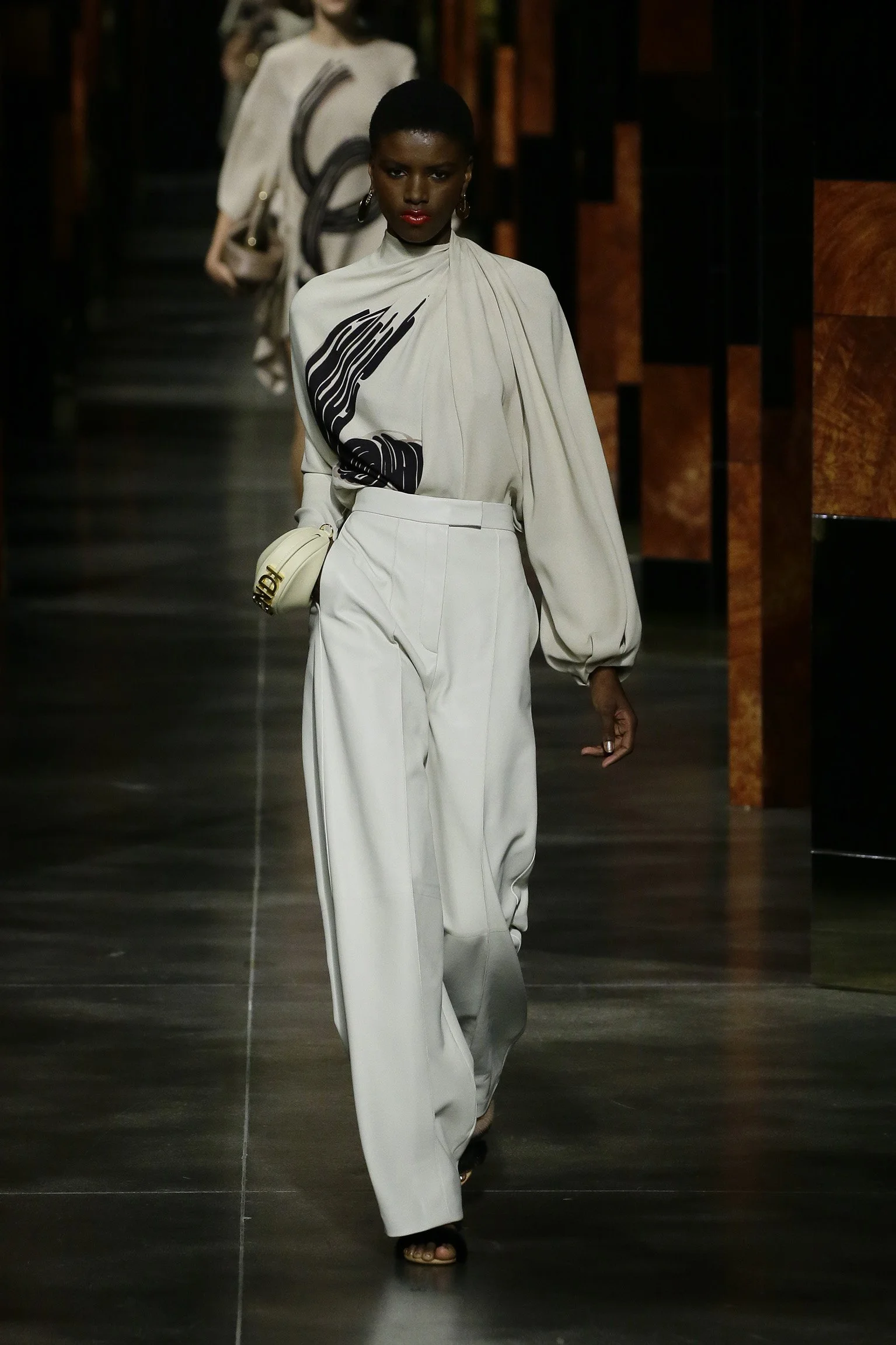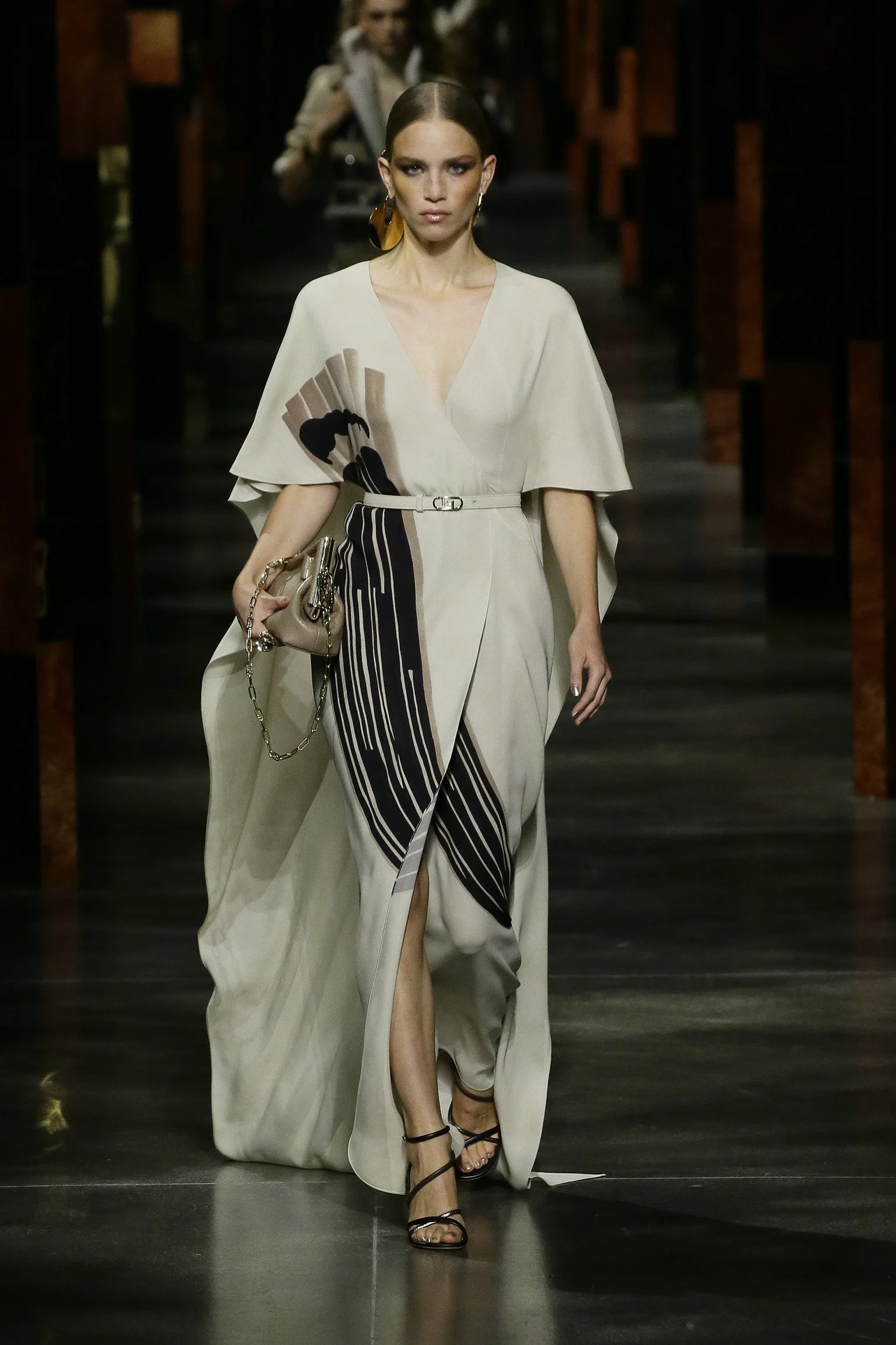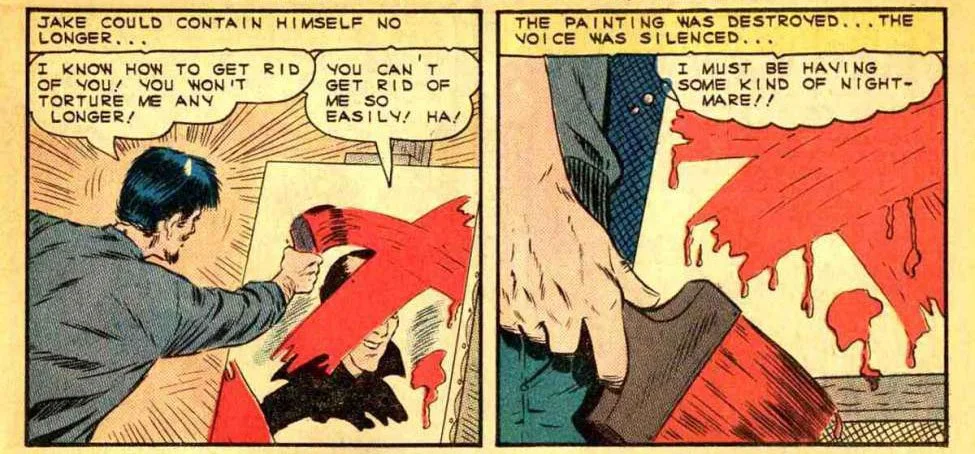The Art of Influence
This past September, Kim Jones debuted his Fendi S/S 2022 collection replete with images pulled from The Antonio Archives. The result was a stunning array of silks, furs, knee high boots and disco inspired ready to wear that instantly transported us back to Studio 54.
Much to our delight, the works that Jones and his team utilized didn’t rely on the celebrity images that Antonio and Juan are typically known for, but instead focused on textile-forward subject matter that showcased the wide range of contemporary and historical references that A & J so liberally applied to their editorial and commercial work. Ever the consummate Creative Director, Kim’s interpretation of these graphic prints were wholly re-imagined, and as Cathy Horyn notes in her New York Magazine review: “If this collection is about anything, it is about how to take a powerful influence and bend it toward your own vision.”
As we reflect on the collection and the works that inspired it, this notion of bending influence has stuck with us. Fashion was always the cause and the context for much of Antonio and Juan’s work, but what truly made their oeuvre so unique was its chameleon-like nature. They borrowed styles from disparate eras, incorporating everything from Renaissance chiaroscuro, Bauhaus geometry, Art Deco patterns, and mass media motifs into their works.
Antonio Lopez and Juan Ramos, France, c. 1970. Photo by Bill Cunningham
In 1961 when Antonio and Juan first met as university freshmen at the Fashion Institute of Technology, the pop art movement was just beginning to percolate in New York. It is through the lens of pop art, and mixing of high and low, that we can begin to fully understand the true conceptual nature of A & J’s work, known by now simply under the moniker “ANTONIO.”
As curator Katell le Bourhis wrote in Antonio: An Artist’s Dialogue with Fashion:
“In choosing fashion drawing as his individual means of expression, [Antonio] benefitted from Pop Art and its positive re-evaluation of commercial art. In contrast to many other fashion illustrators before him, Antonio was neither a painter who illustrated fashion nor a talented fashion artist - he was an artist who found expression in fashion drawings, and fashion became the focal point of his creativity and his artistic endeavors.”
By the mid 1960s, Antonio had recently dropped out of FIT and Juan had taken on a more active role in steering the creative direction of the work. Together, the duo adopted an unconventional way of presenting fashion to the mainstream public and their editorials no longer mirrored the industry standard of static models in staid poses. For a 1965 New York Times spreak, Antonio and Juan looked to comic books for inspiration, incorporating ben day dots, thought bubbles, and the hard edged frame of the comic “strip” into his drawings. The models were transformed into the protagonists of their own stories.
Four drawings from Antonio’s comic inspired editorial for The New York Times, Anonymous model, 1965.
Contemporaneously, pop artists of this era were also adopting the visual language of comic books into their practice. In 1965 Roy Lichtenstein famously distilled a single panel from the October 1964 edition of Strange Suspense Stories entitled The Painting. Lichtenstein cropped the comic’s storyboard to a singular panel, zooming in on the artist’s hand gripping the paint brush and the meticulous rendering of splattered drips. Titled Brushstrokes, the work was a sly nod to the abstract expressionists that had dominated the 1950s and was the first in a long series of works that took “painting” as its subject.
Detail from Strange Suspense Stories, October 1964.
Roy Lichtenstein, Brushstrokes (1965) © Estate of Roy Lichtenstein/DACS 2017
In 1993, Lichstenstein told WHYY's Fresh Air that he was painting the idea of a brush stroke. "You think it's a picture of a brush stroke," Lichtenstein said. "And that's a kind of absurd thing to do. It has that built-in absurdity, and that's the reason I like it." This motif became a regular subject for Lichtenstein and these brushstroke simulations repeatedly appeared in the artist’s work for years to follow.
Roy Lichtenstein, Brushstroke (1965). Screenprint on paper. © Estate of Roy Lichtenstein
Given the tendency for pop artists to mine the field of mass media for inspiration, it is perhaps not surprising that so many of the era’s greats began their careers in commercial art. Andy Warhol famously worked as a fashion illustrator, Tom Wesselman was a cartoonist, Ed Rucha began as a graphic designer, and James Rosenquist started his career as a billboard painter while enrolled in art school in Minneapolis.
Antonio and Juan never made that shift in their lifetime. Even now, their celebrity is derived from their best known published works and their avant garde approach to representation within mass media. However, parallel to the robust professional career is an equally large personal practice that is only now being “discovered.”
In the late 1970s, Juan created a series of pen on velum studies that were a clear homage to Lichtenstein’s brushstrokes. However unlike Lichtenstein’s lithographs, these were rendered by hand in exacting detail. This motif technique was later used in 1978 for Antonio and Juan’s Anuan LTD company stationary, distilling the brushstroke illusion into a corporate logo.
Produced a decade after Lichtenstein’s original works, these were not a mediation on abstract expressionism or a play on the visual language of comics books, but rather a simplification of the pop art aesthetic. It was a reference to and a simulation of pop art’s wild commercial success. Pop Art had come full circle.




Jump ahead 40+ years and these elegant studies on pop pastiche became the entry point into Kim Jones’ collaboration with the Archives. Three of the studies were translated directly onto fabric, with a cut that accentuates the brushstrokes’ elegant arc and seemingly nimble swirls. The dark black of the pen remained, transforming these 8 x 10 inch compositions into large, bold, graphic patterns.
Of course the collection goes far beyond these three works. From here it unfolds into a bold rainbow palette and borrows additional inspiration from late 60s packaging design, textile studies, and more. But for us, it is the life cycle of this singular brushstroke — and the simplicity of its symbolism — through which we can understand how generations of artists, designers, and creatives work in conversation with each other.

















